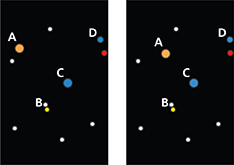CHAPTER 26 Assessment
Interactive Textbook with assessment at PHSchool.com

Reviewing Content
Choose the letter that best answers the question or completes the statement.
The sun produces most of its energy from
chemical reactions.
nuclear fission.
gravitational contraction.
nuclear fusion.
Where does the sun's visible light come from?
the photosphere
the corona
the chromosphere
the radiation zone
Astronomers have learned about the elements in stars by analyzing their
parallax.
apparent brightness.
absorption lines.
red shift.
Most stars are
giants.
main-sequence stars.
supergiants.
white dwarfs.
Which of the following has the highest surface temperature?
red main sequence star
red supergiant
blue main sequence star
black dwarf
The lifetime of a star on the main sequence is determined by its
mass.
apparent brightness.
color.
surface temperature.
The sun will eventually use up its hydrogen fuel and become a
neutron star.
white dwarf.
black hole.
supernova.
Which of the following is likely to have the highest proportion of old stars?
open cluster
globular cluster
association
spiral galaxy
The Milky Way is an example of a (an)
nebula.
elliptical galaxy.
spiral galaxy.
irregular galaxy.
Hubble's Law relates the speed at which a galaxy is moving away to its
shape.
mass.
distance.
absolute brightness.
Understanding Concepts
Explain the two major ways that energy is transferred from the sun's core through its interior.
What are the inward and outward forces that act on the sun? Which force is stronger?
Which parts of the sun are visible during a total solar eclipse? Why can't they usually be seen at other times?
What is a light-year?
The image on the left below shows stars as seen in July. The image on the right below shows the same stars in January. Which star is closest to Earth? Explain.

Suppose two stars have the same absolute brightness, but one star is twice as far from Earth as the other star. Which star has the greater apparent brightness?
When a star enters the red giant stage, what causes its outer layers to expand?
How does a black hole form?
How does Hubble's Law relate to the big bang theory?
How can astronomers measure the speed at which a galaxy is moving away from Earth?
Why are dark matter and dark energy so important in predicting the future of the universe?




